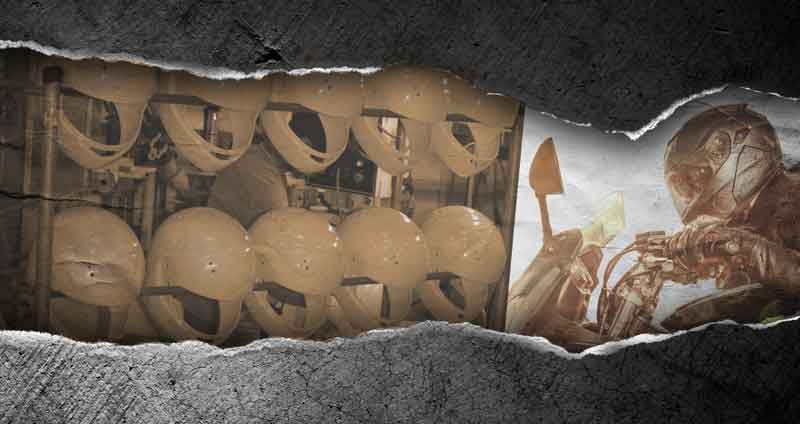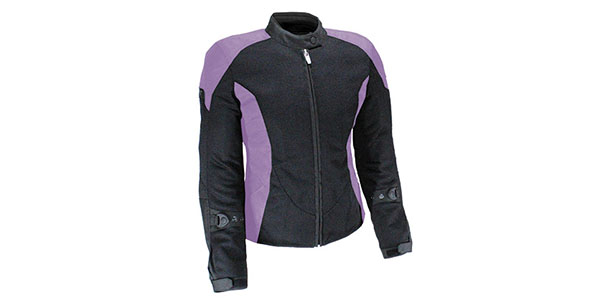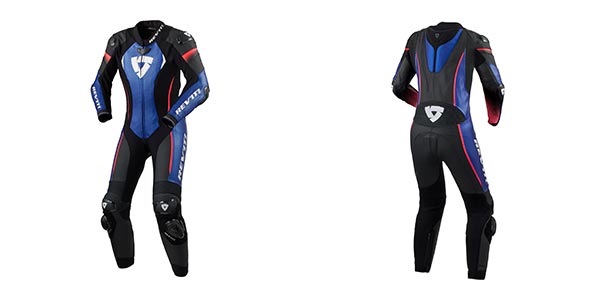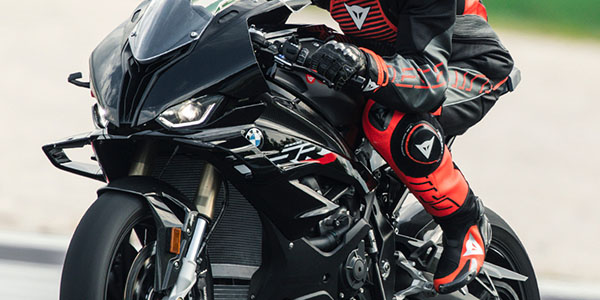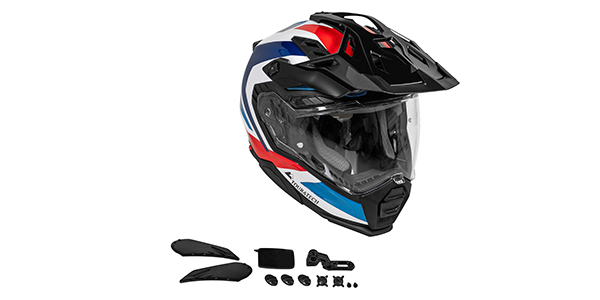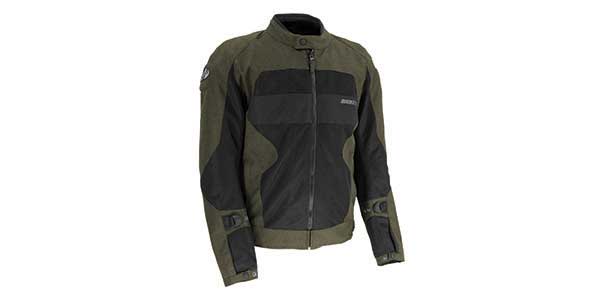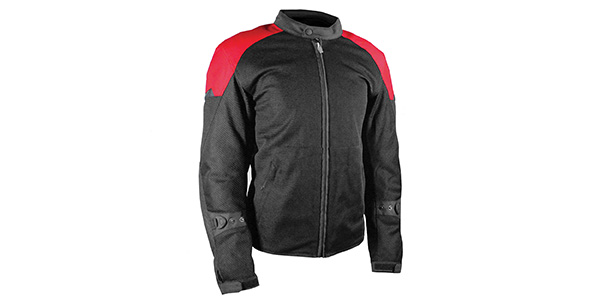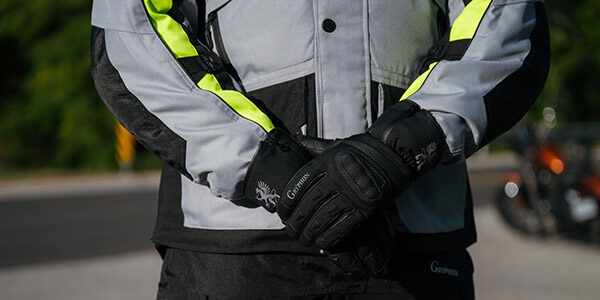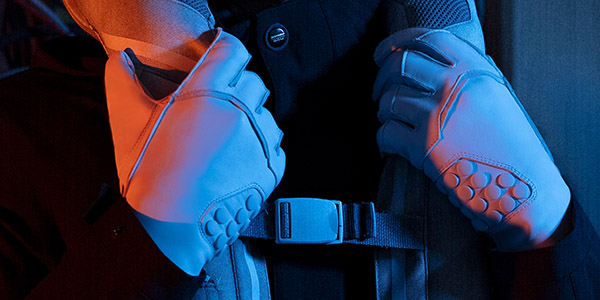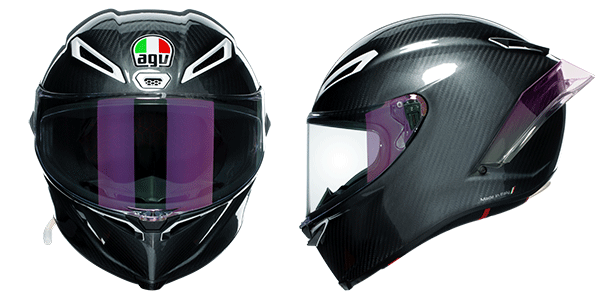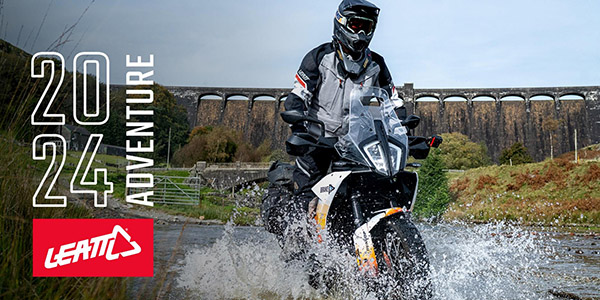The motorcycle helmet has come a long way from the 1914 Isle of Man TT. Legend has it that Dr. Eric Gardner, a British medical officer, convinced race sanctioning body Auto-Cycle Union to make safety helmets mandatory at what arguably was the most prestigious race of the day.
[dropcap]D[/dropcap]r. Gardner’s simple shellacked canvas shells were intended to be stiff enough to withstand a heavy blow, but smooth enough to glance off any obstacles. The materials may have changed, but the basic concept remains the same 101 years later!
From AGV to Vemar in Italy, HJC to Scorpion, MPN has been lucky enough to explore many of the major helmet factories over the years. While there are certainly proprietary secrets, the basics are remarkably similar. Most modern day motorcycle helmets have two fundamental components: The shell and the internal liner.
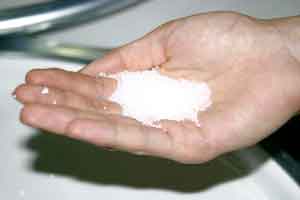
Typically made from polycarbonate plastic, fiberglass, or Kevlar, the outer shell is thin and hard. It has to be abrasion resistant and able to withstand impact. It also needs to be lightweight, aerodynamic and as compact as possible to prevent riders from suffering bobble-head syndrome.
Call it fiberglass, aramid or some other proprietary fabric, the process of constructing the shell is pretty similar for all the manufacturers. Even with state-of-the-art automation found in factories, making a helmet is incredibly labor intensive and extremely hands on.
“There are 30 different hands-on inspection points from start to finish on every one of Shoei’s helmets,” notes Shoei’s marketing coordinator Matthias Beier. “I gave up counting the touch points after 50 during the construction process… for something that is so labor intensive, good helmets are a bargain!”
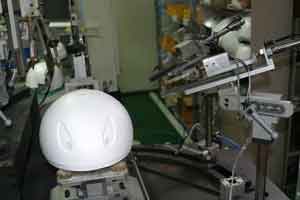
The hands-on begins with layers of fabric being rolled out in sheets, then cut out and placed in strips to be molded in the shape of a shell. In the case of Kevlar, it can be sensitive to temperature so HJC and others have to hand-lay the Kevlar in a climate-controlled cold room. Some styles require pre-molding for shaping by hand to eliminate fiber overlap in the forming process (necessary to reduce shell weight). Matrix materials and the need to strengthen key impact points, means even more hands-on placement of the materials. Then the resin/catalyst combo goes into the mold.
To ensure uniform thickness and maintain consistent weight, many manufacturers employ a process called “bag moulding” – basically an inflatable balloon goes into the mold. Vacuum bag moulding is a modification of hand lay-up, in which the lay-up is completed and placed inside a bag made of flexible film and all edges are sealed. The bag is then evacuated, so that the pressure eliminates voids in the laminate, forcing excess air and resin from the mold. By increasing external pressure, a higher glass concentration can be obtained, as well as better adhesion between the layers/plies of laminate.
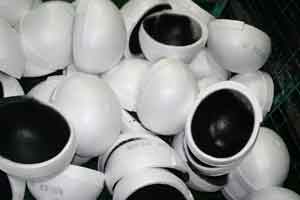
The shell is then formed by alternating between heating and freezing cycles, and then drying. The resulting shell is trimmed and cut precisely. There are variations on the theme, of course. Scorpion’s TCT (Thermodynamic Composite Technology) shell material is a proprietary blend of fiberglass, Kevlar and organic poly-resin fibers to create an extremely light and durable shell matrix, says Scorpion’s new VP Frank Esposito (see Shifting Gears this issue). “Similar material is used extensively in the aerospace industry because of its combination of strength, lightweight, abrasion resistance and superior energy dispersion properties.”

Shoei’s proprietary “AIM+ technology (Advanced Integrated Matrix)” is the secret sauce for the Japanese helmet manufacturer. “The process combines fiberglass, organic fibers and other proprietary materials in a special orientation to create our shell,” Beier says. “The end result is a stronger, lighter, yet still elastic shell that provides advanced impact absorption performance.” Beier proves his point by standing on top of an unfinished shell fresh from the mold to demonstrate there is no cracking or breaking.
Despite the space age materials, the shell remains the heaviest part of the helmet – something Shoei sees as the defining factor.
“We want the safest helmet available, no compromises,” says Shoei Safety Helmet Corp. President Moichi Tsuzuki. Shoei believes that safety stems from the lightest weight, most aerodynamic shell possible. “Three factors are crucial for the weight of the helmet as perceived by the rider,” explains Tsuzuki. “The actual weight of the helmet, the ‘felt’ weight, and the dynamic weight, which is produced by the wind resistance and inertia. The actual weight has a direct influence on the acceleration forces and directly stresses the neck muscles in the event of an accident.”
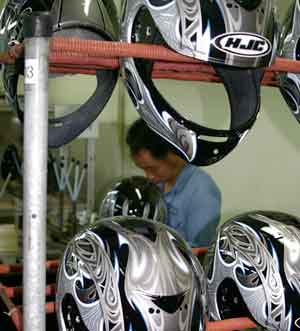
This means each Shoei shell design spends countless hours in its in-house wind tunnels. “We can test a concept 100 times a day… or more if need be,” says Beier. “The investment in a wind tunnel of our own allows us to create effective and efficient ventilation systems.” The need for ventilation led Shoei to develop a dual EPS liner which optimizes the exchange of warm, humid air with incoming cold, fresh air. Beier notes that the benefits of wind tunnel testing are many as it helps reduce noise, improve aero, vision, comfort, etc.; all help to reduce fatigue and make for a more enjoyable ride.
It’s What’s Inside That Counts
Looking like a styrofoam coffee cup, the internal liner is generally an expanded polystyrene (EPS) or polypropylene. Pellets are fed into the molds and “EPS” foam is born via a chemical process. The purpose of the hard outer shell is to prevent penetration of the helmet by a pointed object that might otherwise puncture the skull, and to provide structure to the inner liner so it does not disintegrate upon abrasive contact with pavement. This is important because the EPS is intended to disperse energy.
The purpose of the foam liner is to crush during an impact, thereby increasing the distance and period of time over which the head stops and reducing its deceleration. As USC researcher Dr. Harry Hurt famously said in his landmark crash study in 1981, “Tell me what kind of impact you are going to have and I’ll build you a helmet that will protect you from it.” All helmets help most in impacts at the speeds they were designed for, and continue to help, but not as much in impacts that are at different speeds.
In practice, motorcycle helmet manufacturers choose the impact speed they will design for based on the speed used in standard helmet tests. Most standard helmet tests use speeds between 4 and 7 m/s (8.9 and 15.7 mph; 14 and 25 km/h).
So which standard is best? Snell vs. ECE? BSI vs. JIS? There are almost as many helmet standards as there are countries helmets are sold in! Arguments for which standard is best is a battle best left for another time, but it is interesting to note the Auto-Cycle Union (ACU) gold badge is still a viable standard in the UK, the legacy of that 1914 Isle of Man TT!
“Shoei is concerned with safety first and foremost,” says Tsuzuki. “We manufacture helmets to all standards and maintain in-house testing laboratories that can test to any certification in the world.” For the U.S. Shoei sells Snell approved/DOT helmets.
“A helmet’s job is to help to protect you in a crash,” adds Scorpion’s Esposito. “That’s why ScorpionExo helmets for dirt or street, conforms to the ECE 22.05 (world standard) or the Snell Foundation’s (USA only) safety and quality standards… we believe these are the most demanding helmet standards in the world.” Although, he notes that some of their budget-friendly helmets are only DOT approved.
Looking for even more details? Shoei University is available to qualified dealers, offering courses on both helmet basics and how to sell helmets as well (http://shoei.dulms.net). HJC also offers the reminder that safety sells. “Even if a helmet has not been damaged, it needs to be replaced every 3 to 5 years depending on how much it is used. Over time, UV rays and adhesive and component aging will damage any helmet. Wearing a damaged helmet may increase the risk of serious injury or death in an accident.”
In addition to the shell and liner materials, shape comes into play. Arai is a proponent of shape as safety element as well. Arai believes in the what they call the “R75 shape” — the concept being the shell should maintain a continuously round shape with a minimum radius of 75mm. Then again an argument could be made for Dr. Gardner’s original intent that the helmet be smooth enough to glance off objects. The more things change, the more they stay the same!
Photos taken at both Shoei and HJC facilities.

